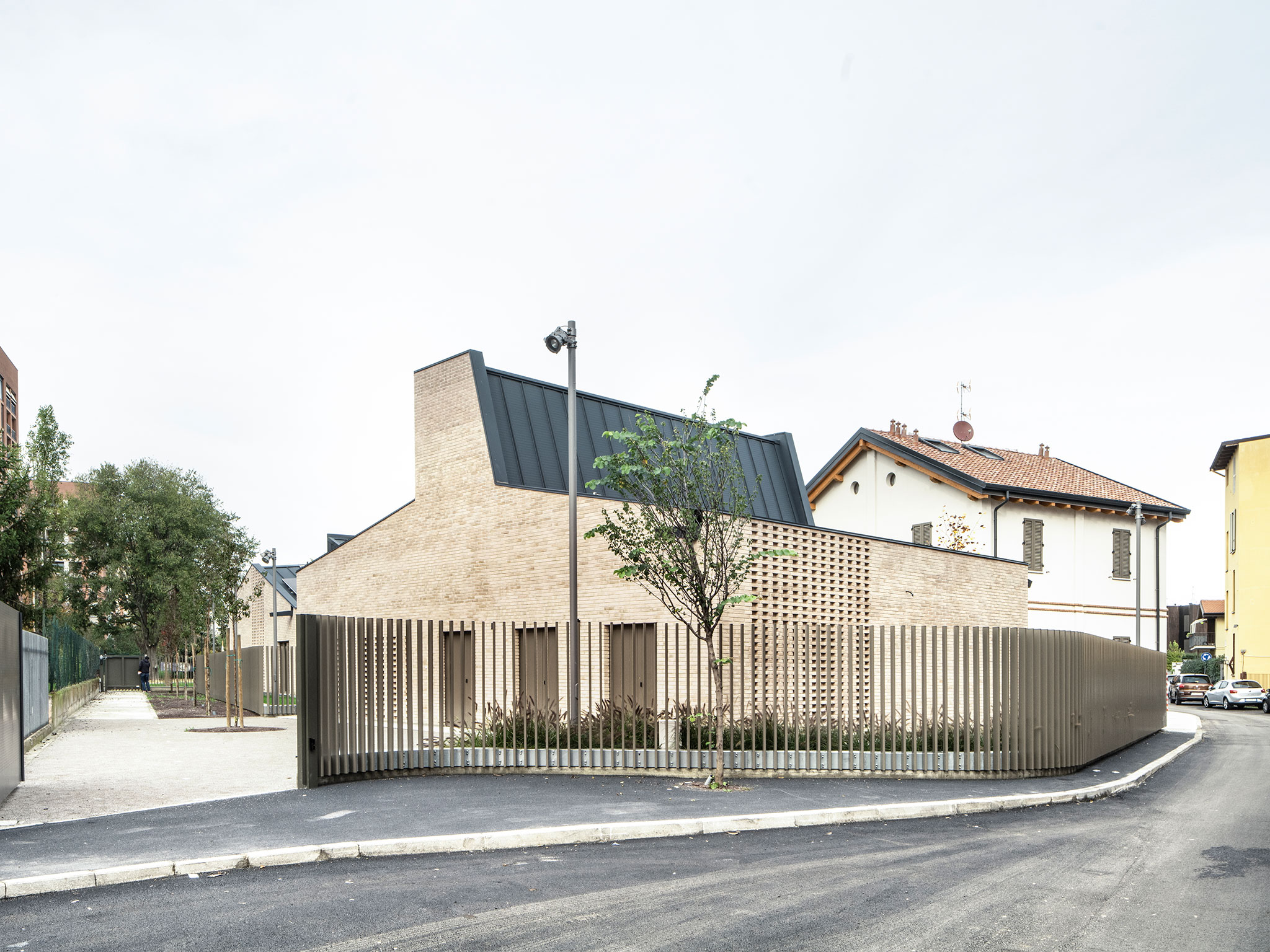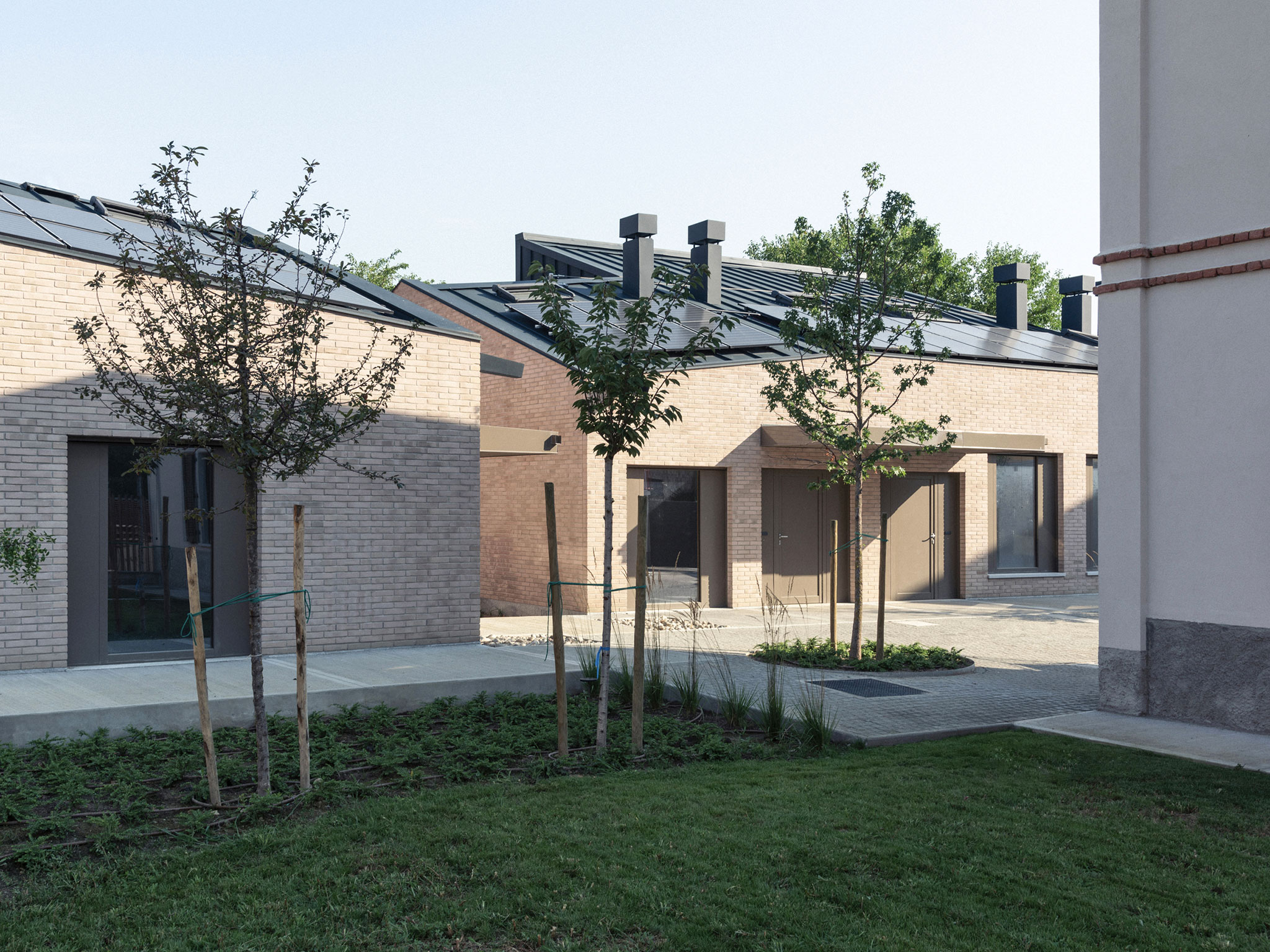The project is a hybrid between renovation and new volumes, which has taken into account materials, shapes and colours as a result of careful research on the domesticity of places, extended to perceptual aspects linked to cognitive disabilities.
The two newly built volumes house apartments for parents and children with cognitive disabilities, with spaces characterized by large skylights that overlook the park. The farmhouse, together with the new pavilion, houses the headquarters of the two associations involved.

SON center for mental fragility "Cascina San Carlo" by B22. Photograph by Filippo Romano.

SON center for mental fragility "Cascina San Carlo" by B22. Photograph by Simone Marcolin.
Project description by B22
The SON centre for mental fragility, located on the outskirts of Milan, consists of a cluster of housing and social services, distributed within two residential buildings and a pavilion for civic and public activities. Moreover, the project includes the refurbishment of Cascina San Carlo – a building dating back to 1915 – and the redevelopment and expansion of the adjacent public park.
Two new buildings accommodate the apartments for parents with children affected by mental fragility. On the ground floor, bright rooms characterized by large windows open onto the surrounding green spaces. On the first floor, the project provides rooms illuminated by large skylights oriented towards the park, intended to house dwellers in support of the families.
The existing building and the new pavilion host two associations for the promotion of activities with social vocation and a room–equipped with a cooking laboratory–for both public activities and private gatherings. Finally, as part of the intervention, a new orchard was included in the design of the garden, and an abandoned area of public property was reclaimed and planted.
The buildings and the landscape dialogue with the historical signs and paths present in this fragment of the city, with the aim of creating an inclusive environment, but also a discreet landmark which, during the night, like a lantern, becomes visible to the neighbourhood.
The relationship between living spaces and natural elements – the light, the landscape, the passage of time and the seasons – is at the core of the physical and social project. Materials, shapes, and colours are the result of careful research on the domesticity of the place, extended to the perceptive aspects linked to cognitive fragilities.
The intervention – subject of a specific urban planning agreement with the public administration – is carried out within the framework of the law "Dopo di noi", which protects the rights of people with disabilities left without family support, and it is entirely financed by private donations and fundraising.





























































